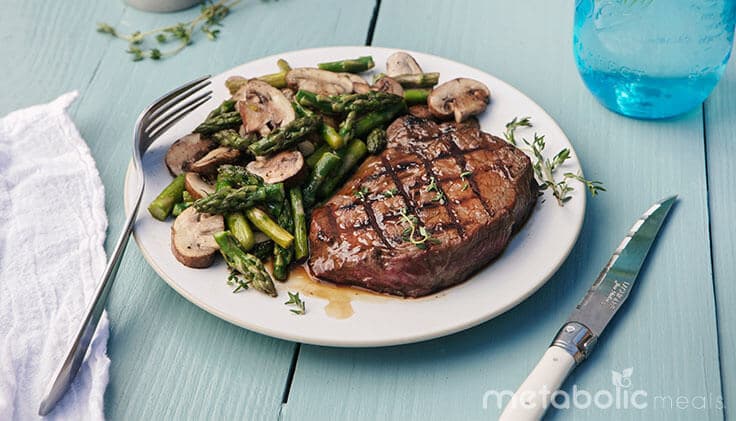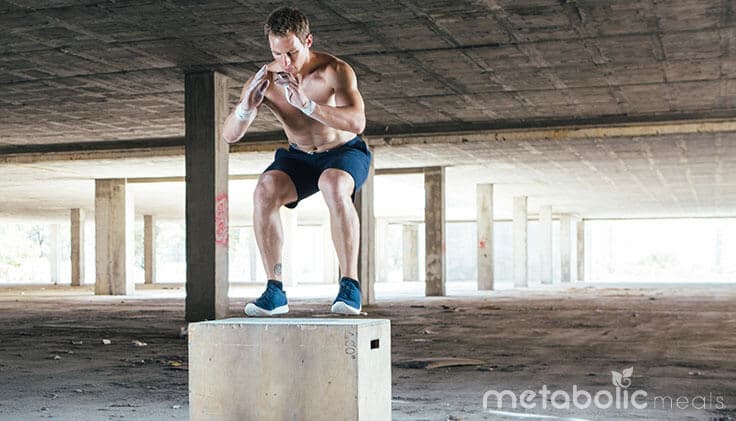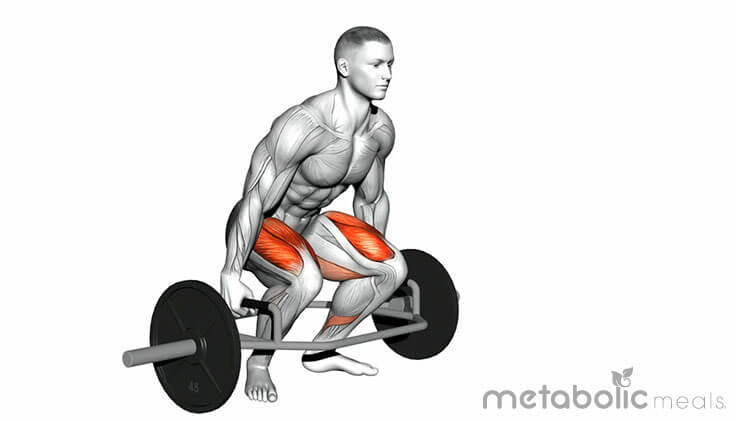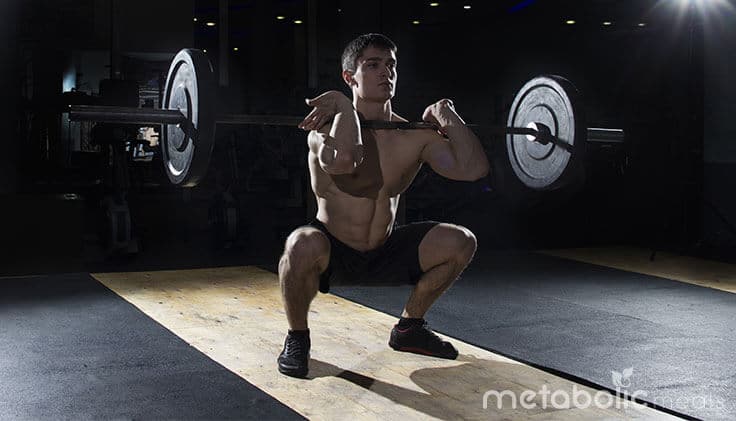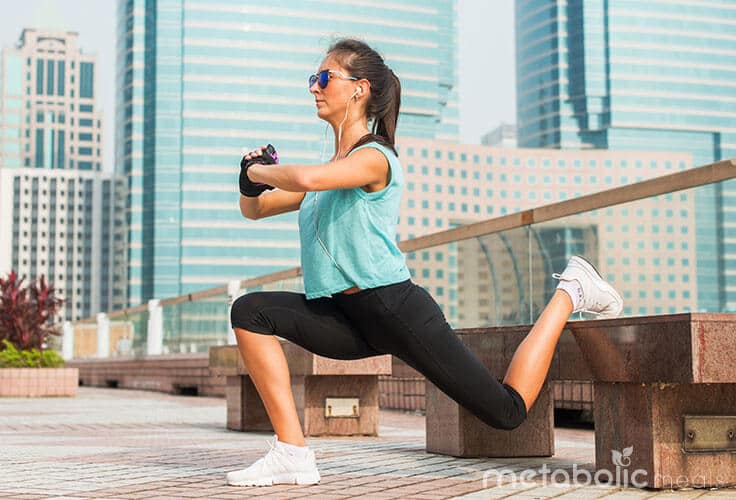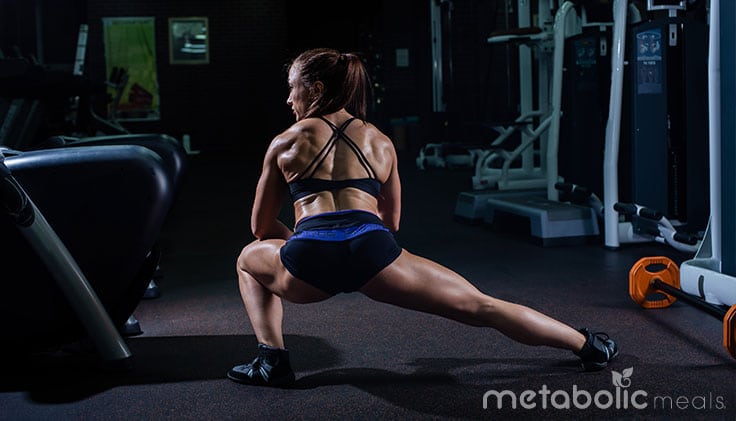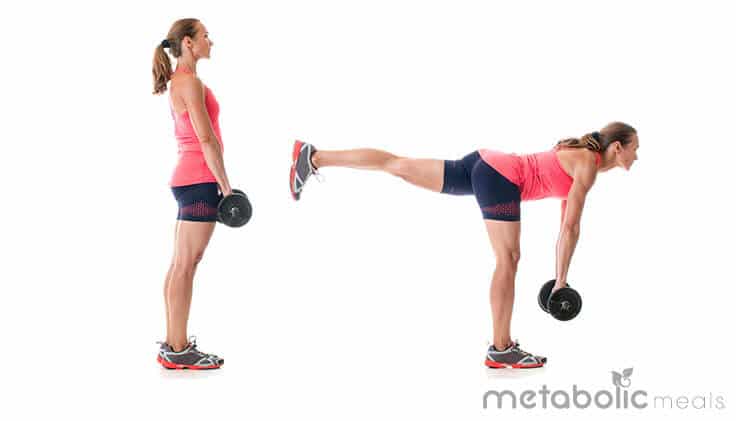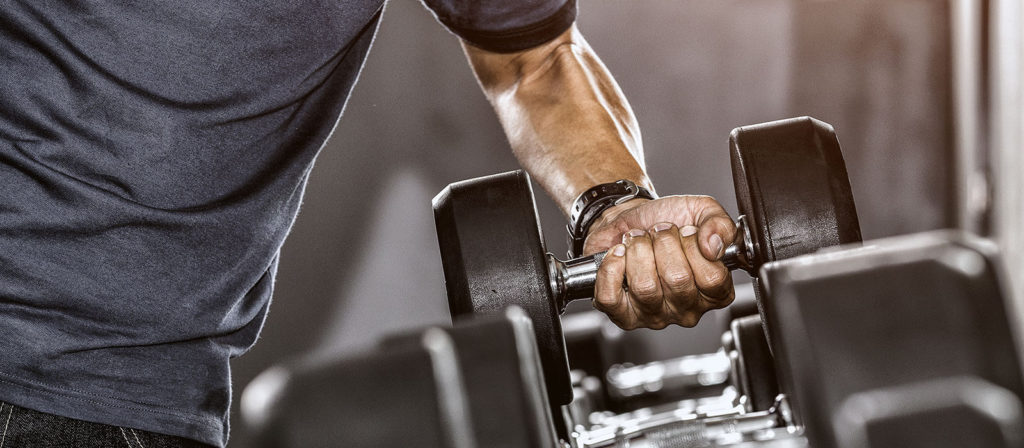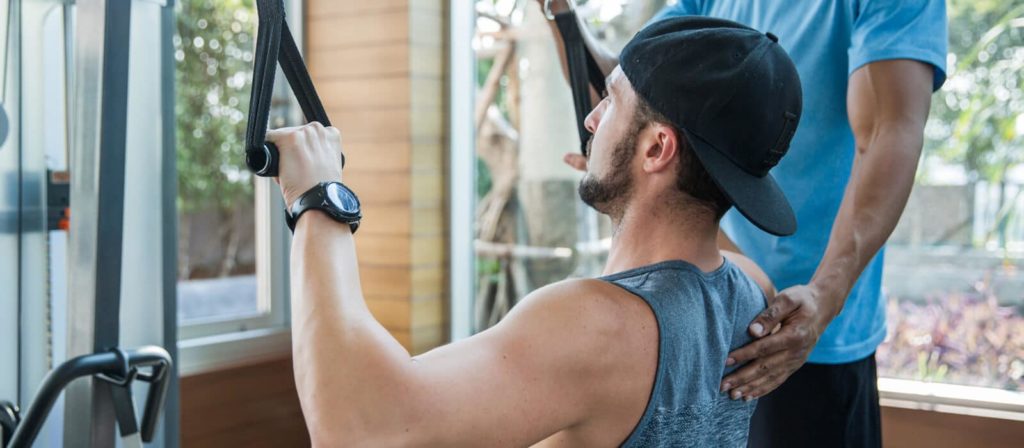ARTICLE AT A GLANCE
If you want to see results from any type of exercise or movement, it comes down to efficiency, mastery of the movement, progression, and commitment to the process. Whether your goal is to improve your lower or upper body, compound exercises put stress on your system as a whole, leading to the best results.
If you want to see results from any type of exercise or movement, it comes down to efficiency, mastery of the movement, progression, and commitment to the process. Whether your goal is to improve your lower or upper body, compound exercises put stress on your system as a whole, leading to the best results.
These multi-joint movements utilize several muscle groups at the same time to load and develop the pattern being used. Some say the bench press is king for chest, shoulder, and triceps development, but that’s only because the amount of weight used during the exercise can link and stress those muscles to a point where the body is forced to adapt and produce results of resiliency and strength.
However, the movement needs to be performed properly and without restriction in order to yield these results. Not every exercise is for every body. Every exercise can produce some sort of result, sure — but you need to keep your goals and capabilities in mind to stay on the right track.
Lower-Body vs. Upper-Body Results
Development of the lower body for most people can certainly be more complex than that of the upper body. Most people can naturally perform bench presses, pull-ups, various shoulder exercises, and bicep and tricep movements with few issues and through a full range of motion. When performing lower body movement patterns, however, many people encounter a host of problems that can hinder the development of the muscle groups involved.
For instance, in most strength and conditioning programs, the back squat is the standard exercise for lower-body strength development and performance. However, the mastery and efficiency of this movement for many athletes are low. Mobility restrictions caused by improper training, prior injury, or other compensations don’t allow them to load the exercise properly or safely.
At this point, modifications are necessary to work around issues such as poor ankle or hip mobility or problems with core stability. The path to seeing results from exercises that have been fit to an individual’s needs and capabilities is much quicker than a one-size-fits-all approach.
The Importance of a Healthy Diet
For most of the elite athletes I’ve worked with, nutrition is typically the one element of their performance programs that falls behind — but I believe nutrition plays a critical role in an athlete’s program. In fact, I’d say if you made a pie chart of the important elements of a program, nutrition would make up 70 to 80 percent. It’s also one of the most crucial aspects of fitness that takes place outside the athletic facility.
Training and practice, while difficult, can be monitored to the yard and point. But most eating habits are built and maintained at home and while out to eat. That leads me to believe that athlete education is key to ensuring that athletes have healthy diets. Making athletes — and even those of us who are not elite athletes — aware of a poor diet’s potential negative effects on careers and personal lives can produce an immediate impact.
10 of the Best Lower-Body Exercises
Once you instill healthy habits over time in regard to food selection and meal timing, you’ll be one step closer to performing at your highest level and extending your training — or professional athletic career — for many years to come. At that point, it’s time to turn your attention to the exercises themselves. For now, we’ll focus on the lower body. It’s important to note that these descriptions detail the original exercise. Work with a coach to create personalized modifications if necessary.
The lower body generates the primary source of force and energy for the following three exercises, which require minimal contributions from the upper body to produce power and speed:
1. Kettlebell Swing
Stand with feet hip-width apart, toes pointed out, and knees slightly bent. Grab the kettlebell with two hands, keeping your arms straight and shoulders pulled back. Push your hips back, allowing the kettlebell to swing between the legs, loading the glutes, hamstrings, and lower back. Forcefully extend these muscles to repeat movement in a fast, rhythmic fashion.
2. Box Jump
Stand with feet hip-width apart, in tall athletic position in front of a sturdy plyometric box about 18 to 36 inches tall with a good landing area. With your arms loaded at 90 degrees in front of your body, rapidly descend into a quarter squat position, forcefully extending the ankle, knee, and hip to jump on the box, landing softly in a good athletic position.
3. Trap Bar Deadlift
Stand with feet hip-width apart, bending from the knees and hips to grip the trap (hex) bar with your arms straight, back flat, hips back, and eyes focused straight ahead. From this position, with your core braced, forcefully push through the ground, letting the hips and shoulders rise at the same time to extend the knee and hip while maintaining good posture. Return the bar to the ground slowly, and reset position.
The next four exercises load the body through a knee-dominant pattern to strengthen the musculature of the entire core, quadriceps, abs, abductors, glutes, hamstrings, and lower legs:
4. Back Squat
After stepping out of the rack with a barbell loaded and gripped secure across your upper back, position your feet between hip- and shoulder-width apart with your toes slightly pointed out. While maintaining great upper body posture, unlock your knees and hips to fully bend into a parallel thigh position. Keep your knees out and chest up, and forcefully extend your knees and hips, driving up through the mid-foot and heel back to the starting position.
5. Front Squat
This squat variation requires a barbell to be loaded and gripped secure across your upper chest and clavicles with your elbow held in a high, stable rack position. Position your feet between hip- and shoulder-width apart with your toes slightly pointed out. While maintaining great upper body posture, unlock your knees and shift your hips back to allow your knees and hips to fully bend into a parallel thigh position. While keeping your knees out and chest up, forcefully extend your knees and hips while driving up through the mid-foot and heel back to the starting position.
6. Rear Foot Elevated Single Leg Squat
This challenging single-leg variation can be a great addition to a lower-body training program to create a unilateral base and provide a different stimulus for improving performance. Kettlebells and dumbbells can be loaded in a variety of positions to complete this exercise. With your rear foot elevated to slightly below shin height, position your front foot slightly out in front of your body. While keeping good posture, simultaneously allow your front and back knee to bend into a parallel thigh position while keeping the load through the mid-foot and heel in line with your front leg and vertical shin. Forcefully extend the knee and hip of the front leg back to the starting position while maintaining good posture.
7. Lunge Combo: Lateral + Transverse
This combination exercise can also be loaded with a variety of implements to challenge the body in multiple planes and ranges of motion. The initial movement of this exercise requires you to take a wide lateral step while simultaneously bending your hip and knee to a parallel thigh position with toes straight ahead, keeping your lead knee out and trail leg straight. From here, apply force off the loaded leg and return to the starting position. The second part of this movement requires you to take a rotational step at 90 degrees and load the same leg in a similar fashion. This movement requires more range of motion at both hips to both get depth and return to the starting position in one step.
Finally, these three exercises load the body through a hip-dominant pattern to strengthen the musculature of the entire core, glutes, hamstrings, and lower legs:
8. Barbell Hip Lift
Lying on the ground with a pad along your waist, roll a barbell just above your waist across your pelvis. Grip the barbell outside of hip width, with your feet and heels securely tucked underneath your body. While maintaining good ground contact with your upper and lower back, forcefully extend your hips to their highest point while maintaining a neutral spine. Lower the bar under control to the starting position.
9. Glute-Hamstring Raise
With your body positioned in a glute-hamstring bench, align your knees at 90 degrees with your hips extended, a neutral spine, and toes pointed straight. While extending the knee and eccentrically contracting the hamstrings, lower the body until it is parallel with the ground, then return to the starting position by forcefully flexing your knee and keeping the hips extended.
10. Romanian Deadlift (Single-Leg) Variation
Grip a set of dumbbells, or a barbell just outside hip width with an overhand grip, and your shoulders pulled back. Stand with feet hip-width apart, toes pointed straight, and knees slightly bent. Push your hips back, allowing the dumbbells or bar to trace along your thighs, loading your glutes, hamstrings, and lower back. Forcefully extend these muscles to repeat the movement. You can also perform this movement as a single-leg variation to create a new challenge and improve performance.
While working on any lower-body training program, it is critical to train your ankles and lower legs. Maintaining an adequate range of motion and strength in the four movements of the ankle — plantarflexion, dorsiflexion, inversion, and eversion — can have high-reaching implications for overall movement patterns. Oversight and lack of attention to this major joint could also be a limiting factor in performance and durability.
Through my experience working with athletes, I’ve found these lower-body exercises to be quite effective. Once you have your nutritional habits in order, try out these movements during your next training session. If you perform them correctly and always keep your goals in mind, these exercises can quicken your path to improved lower body strength.
Jason Benguche is a strength coach for the Carolina Panthers.

